
LOADING ...
In response to evolving domestic opinion, eMedals Inc has made the conscious decision to remove the presentation of German Third Reich historical artifacts from our online catalogue. For three decades, eMedals Inc has made an effort to preserve history in all its forms. As historians and researchers, we have managed sensitive articles and materials with the greatest of care and respect for their past and present social context. We acknowledge the growing sentiments put forth by the Canadian public and have taken proactive actions to address this opinion.
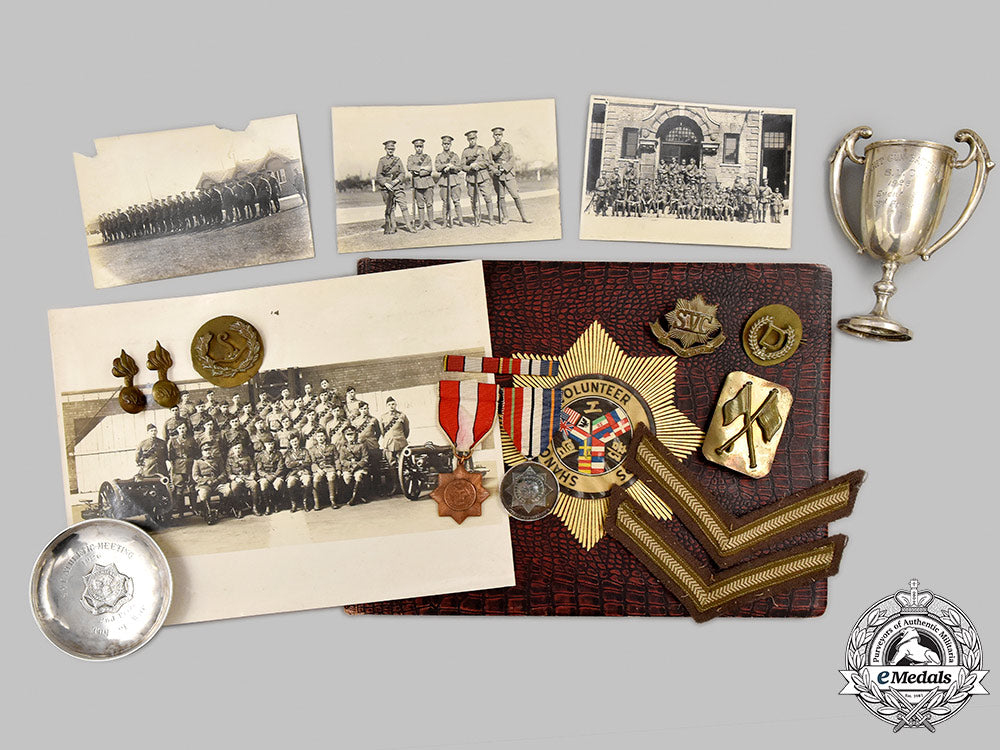
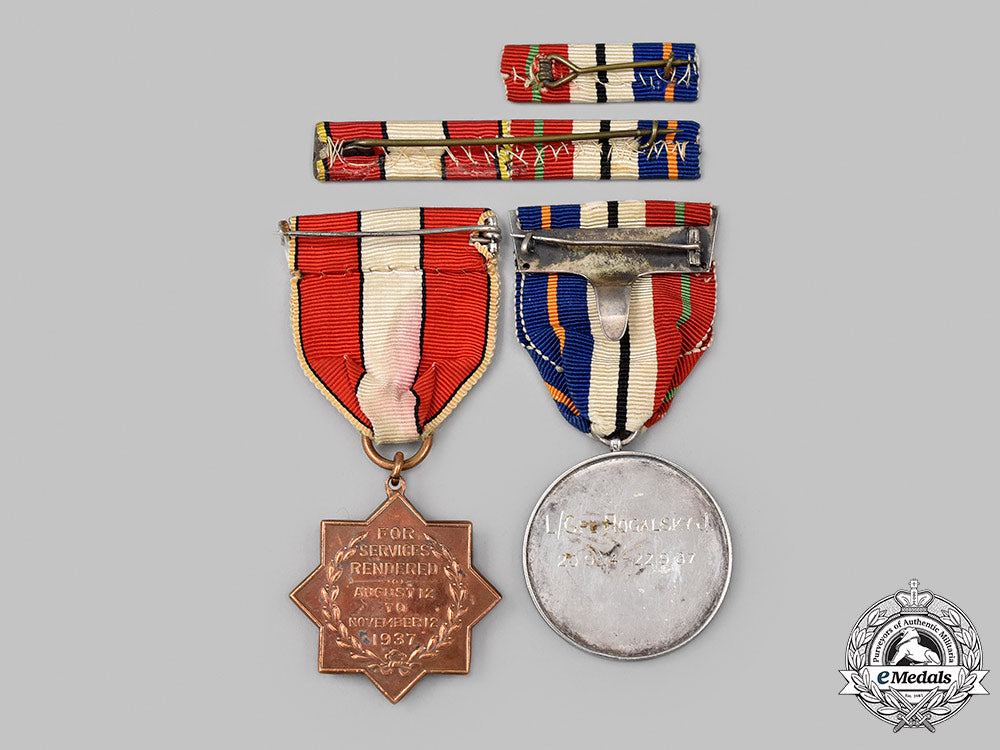
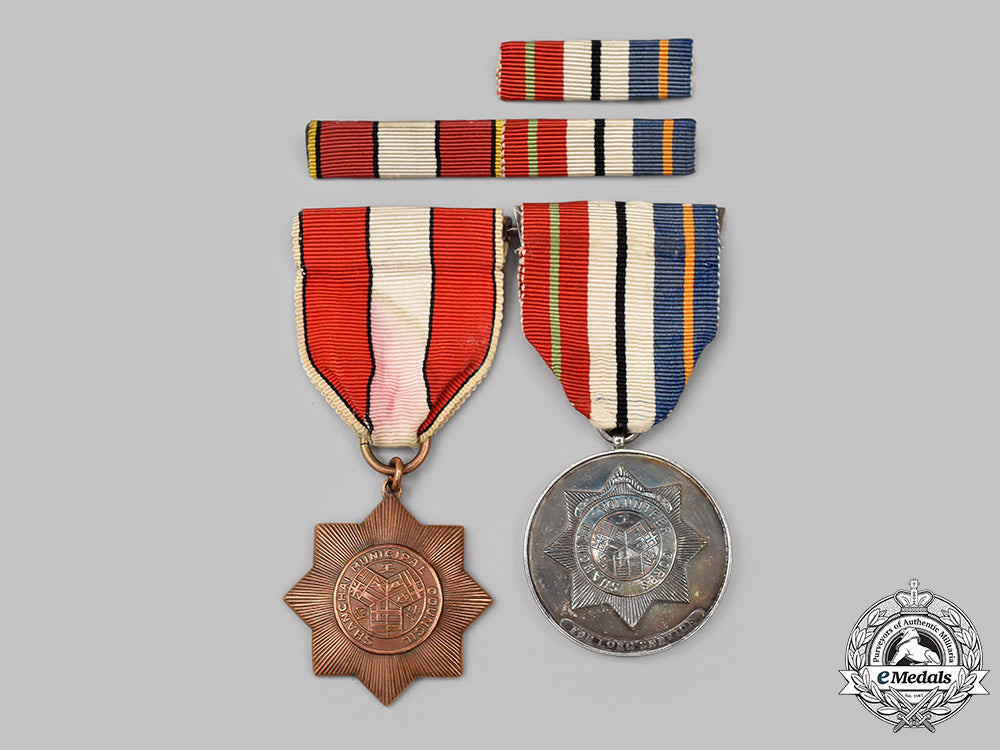
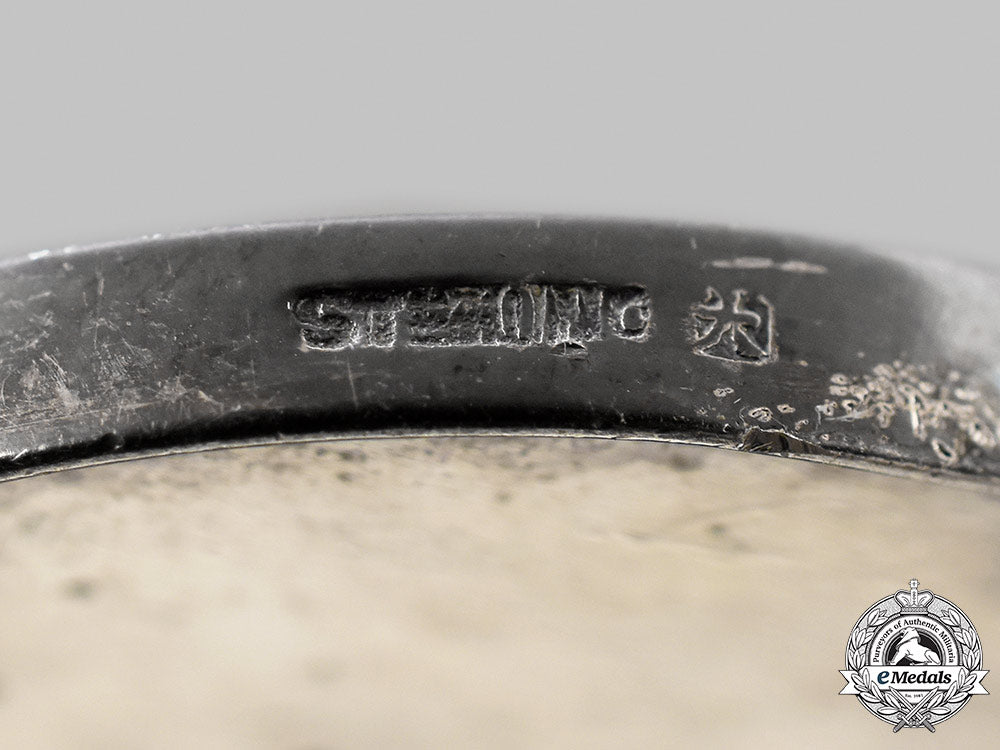
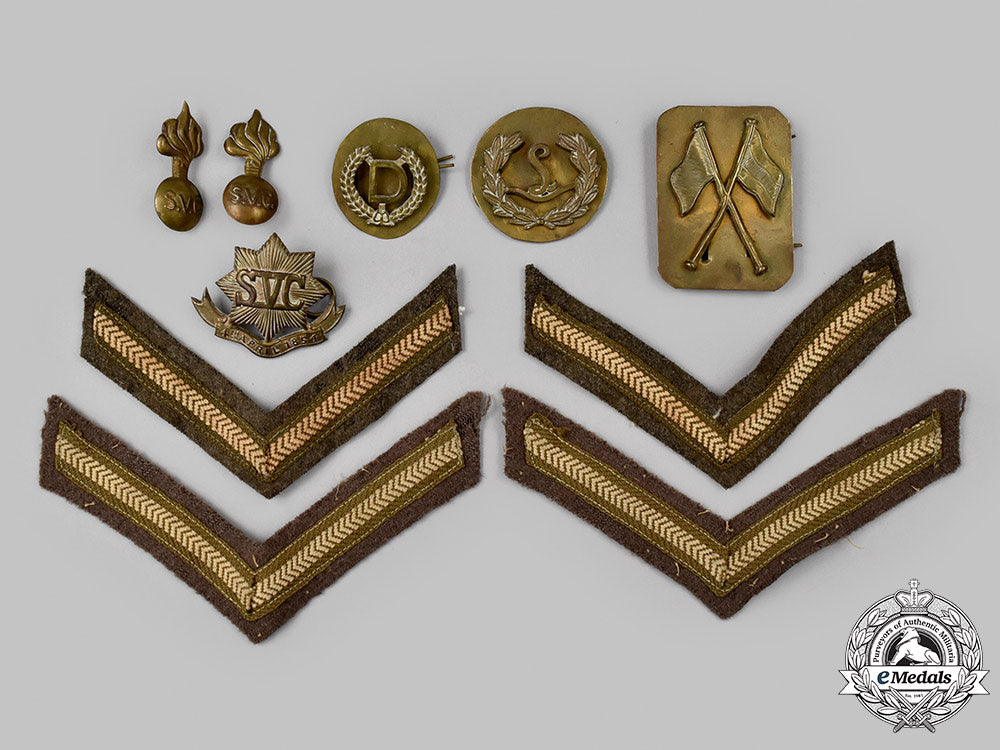
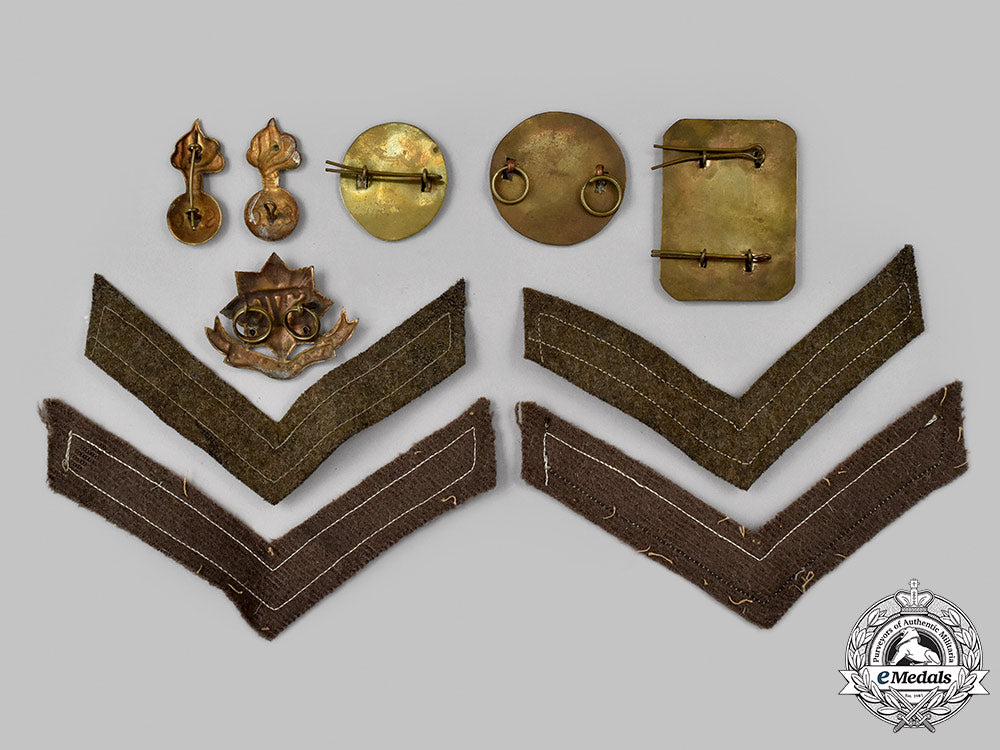
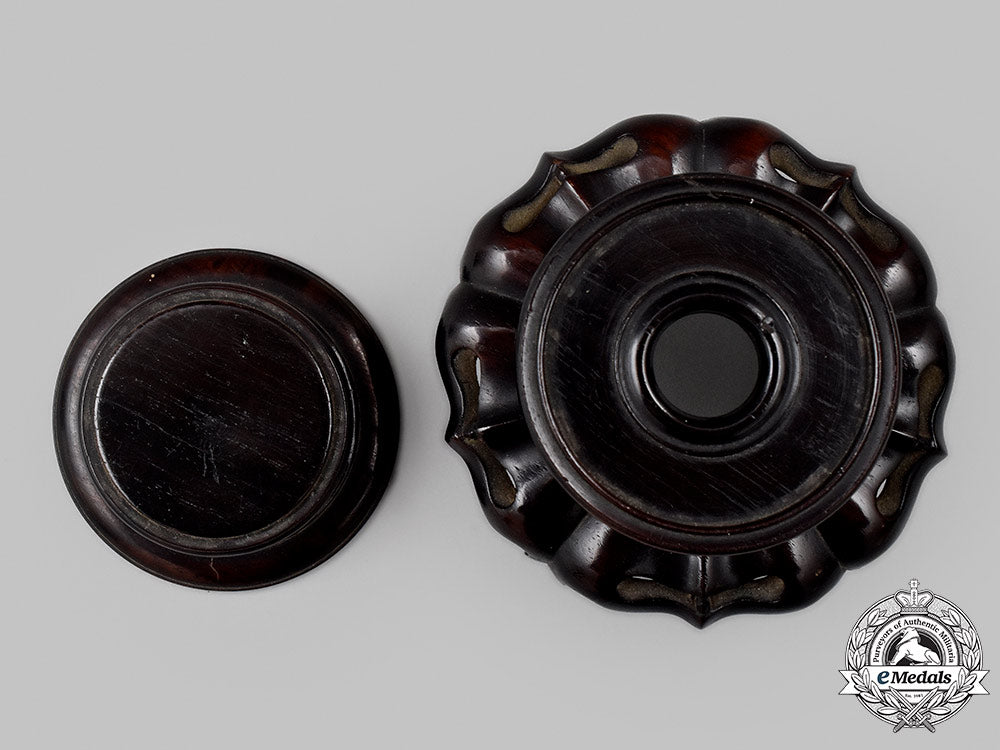
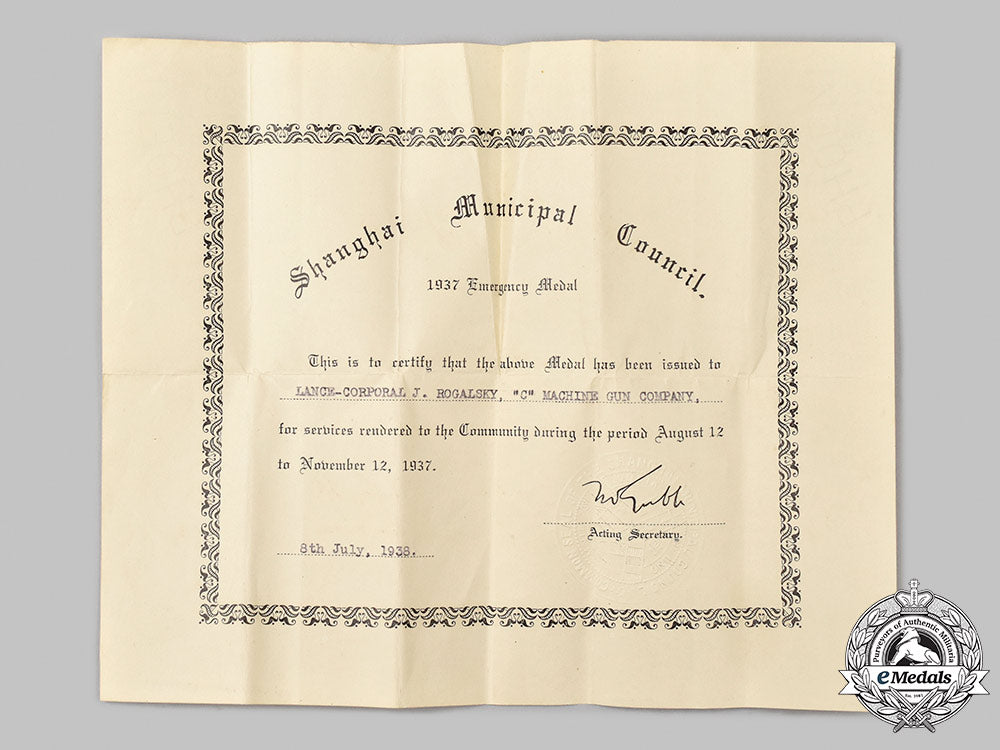
China, Republic. A Superb Shanghai Volunteer Collection To Lance Corporal J. Rogalsky Of "C" Machine Gun Company
China, Republic. A Superb Shanghai Volunteer Collection To Lance Corporal J. Rogalsky Of "C" Machine Gun Company
SKU: ITEM: M0480-1
Current Bid:
Your Max Bid:
Bid History:
Time Remaining:
Couldn't load pickup availability
Shipping Details
Shipping Details
eMedals offers rapid domestic and international shipping. Orders received prior to 12:00pm (EST) will be shipped on the same business day.* Orders placed on Canadian Federal holidays will be dispatched the subsequent business day. Courier tracking numbers are provided for all shipments. All items purchased from eMedals can be returned for a full monetary refund or merchandise credit, providing the criteria presented in our Terms & Conditions are met. *Please note that the addition of a COA may impact dispatch time.
Shipping Details
eMedals offers rapid domestic and international shipping. Orders received prior to 12:00pm (EST) will be shipped on the same business day.* Orders placed on Canadian Federal holidays will be dispatched the subsequent business day. Courier tracking numbers are provided for all shipments. All items purchased from eMedals can be returned for a full monetary refund or merchandise credit, providing the criteria presented in our Terms & Conditions are met. *Please note that the addition of a COA may impact dispatch time.
Description
Description
The unit was mobilized in 1900 for the Boxer Rebellion and in 1914 for the First World War. In 1916, the British recruited Chinese to serve in the Chinese Labour Corps for service in rear areas on the Western Front to free troops for front line duty. Many members of the SVC served as officers in the CLC. In 1910, the German contingent consisted of one regular company (Prinz Heinrich Kompangie) and one reserve company. When the First World War broke out, at least forty of the German volunteers in Shanghai left to join the 7. Kompagnie of the III. Seebataillon in the defence of Tsingtao.
At various times during its history, the Shanghai Volunteer Corps included Scottish, American, Chinese, Italian, Austro-Hungarian, Danish, German, Filipino, Jewish, Portuguese, Japanese, White Russian, and Eurasian companies, amongst others. The British War Office supplied weapons and a commanding officer. The German and the Austro-Hungarian companies were disbanded in 1917 when China declared war on Germany. Prior to 1914 some of the national contingents wore distinctive parade uniforms at their own expense, modelled on those of their respective armies.
While the uniforms of each company differed in many ways, each made use of the Cap badge of the SVC which consisted of an eight-pointed Brunswick star with the letters "SVC" and the date "4th April 1854" in a scroll underneath. The official seal of the Volunteer Corps was different however and consisted of the Municipal Council seal as approved in 1868 on a gold Brunswick star and was exactly the same except the council title and motto was replaced with "Shanghai Volunteer Corps" and the Prussian flag (representing Germany) was retained even when it was removed from the council flag after 1917.
The insignia of the companies also differed: the German Company, "Prinz Heinrich Kompagnie", wore a crowned "H" monogram on their shoulder straps for Prince Heinrich of Prussia (Kaiser Wilhelm II's younger brother and commander of the German East Asia Squadron, 1899-1903), and the Jewish Company, who wore collar insignia consisting of a Star of David with "SVC" in the centre. The Portuguese Company wore red collar tabs, as worn by the Portuguese Army, and had the distinction of being the only SVC unit to be decorated by any government, when on October 5, 1932, the Portuguese Minister to China presented the Company with the Military Order of Christ.
The SVC reached its maximum strength in the early 1930s where it consisted of the following units: Light Horse (1882, American Troop), Field Artillery Battery, Light Artillery Battery (prior to 1924 it was the Scandinavian Company, Field (Engineers) Company, Armoured Car Company (1928), "A" Company (British), "B" Company (1890, Eurasian), "C" Company (Chinese), American Company (1900), Japanese Company (1907), "H" Company (1932, Jewish Company), Philippine Company (1932, under American Officers), Portuguese Company (1906), Shanghai Scottish (1914), American Machine Gun Company (1932), Transport Company (1932), Signals Company (1932), Interpreter Company (1932), Air Defence Company, Public School Cadet Company, White Russian Regiment (1927), White Russian Regiment (1930's).
The German Company, founded in 1891 and granted permission to be named the "Prinz Heinrich Kompagnie" in 1898, and the Austro-Hungarian Company, founded in 1912, were both disbanded in 1917 with China's entry into the First World War. The Italian Company, founded in 1914, also later disbanded in 1920. With the exception of the White Russians, the Corps were all unpaid Volunteers with the SVC financed by the Shanghai Municipal Council. On January 16, 1941, the Russian Regiment became the Auxiliary Detachment of the Shanghai Municipal Police.
Description
The unit was mobilized in 1900 for the Boxer Rebellion and in 1914 for the First World War. In 1916, the British recruited Chinese to serve in the Chinese Labour Corps for service in rear areas on the Western Front to free troops for front line duty. Many members of the SVC served as officers in the CLC. In 1910, the German contingent consisted of one regular company (Prinz Heinrich Kompangie) and one reserve company. When the First World War broke out, at least forty of the German volunteers in Shanghai left to join the 7. Kompagnie of the III. Seebataillon in the defence of Tsingtao.
At various times during its history, the Shanghai Volunteer Corps included Scottish, American, Chinese, Italian, Austro-Hungarian, Danish, German, Filipino, Jewish, Portuguese, Japanese, White Russian, and Eurasian companies, amongst others. The British War Office supplied weapons and a commanding officer. The German and the Austro-Hungarian companies were disbanded in 1917 when China declared war on Germany. Prior to 1914 some of the national contingents wore distinctive parade uniforms at their own expense, modelled on those of their respective armies.
While the uniforms of each company differed in many ways, each made use of the Cap badge of the SVC which consisted of an eight-pointed Brunswick star with the letters "SVC" and the date "4th April 1854" in a scroll underneath. The official seal of the Volunteer Corps was different however and consisted of the Municipal Council seal as approved in 1868 on a gold Brunswick star and was exactly the same except the council title and motto was replaced with "Shanghai Volunteer Corps" and the Prussian flag (representing Germany) was retained even when it was removed from the council flag after 1917.
The insignia of the companies also differed: the German Company, "Prinz Heinrich Kompagnie", wore a crowned "H" monogram on their shoulder straps for Prince Heinrich of Prussia (Kaiser Wilhelm II's younger brother and commander of the German East Asia Squadron, 1899-1903), and the Jewish Company, who wore collar insignia consisting of a Star of David with "SVC" in the centre. The Portuguese Company wore red collar tabs, as worn by the Portuguese Army, and had the distinction of being the only SVC unit to be decorated by any government, when on October 5, 1932, the Portuguese Minister to China presented the Company with the Military Order of Christ.
The SVC reached its maximum strength in the early 1930s where it consisted of the following units: Light Horse (1882, American Troop), Field Artillery Battery, Light Artillery Battery (prior to 1924 it was the Scandinavian Company, Field (Engineers) Company, Armoured Car Company (1928), "A" Company (British), "B" Company (1890, Eurasian), "C" Company (Chinese), American Company (1900), Japanese Company (1907), "H" Company (1932, Jewish Company), Philippine Company (1932, under American Officers), Portuguese Company (1906), Shanghai Scottish (1914), American Machine Gun Company (1932), Transport Company (1932), Signals Company (1932), Interpreter Company (1932), Air Defence Company, Public School Cadet Company, White Russian Regiment (1927), White Russian Regiment (1930's).
The German Company, founded in 1891 and granted permission to be named the "Prinz Heinrich Kompagnie" in 1898, and the Austro-Hungarian Company, founded in 1912, were both disbanded in 1917 with China's entry into the First World War. The Italian Company, founded in 1914, also later disbanded in 1920. With the exception of the White Russians, the Corps were all unpaid Volunteers with the SVC financed by the Shanghai Municipal Council. On January 16, 1941, the Russian Regiment became the Auxiliary Detachment of the Shanghai Municipal Police.








You May Also Like
Germany, HJ. A 1938 National Trade Competition Victor’s Badge, Gold Grade in Case, By Gustav Brehmer
G60096
Italy, Republic. An Order of Merit of the Italian Republic, Grand Cross Set by Johnson, 1970
EU23677
Spain, Franco Period. An Order of Civil Merit, Grand Cross Set
EU23731
Russia, Imperial. An Order of St. Anne, II Class in Gold
EU23720
Austria, Imperial. An Order of the Iron Crown, III Class in Gold, by Rothe, c.1900
EU23723
-
Germany, HJ. A 1938 National Trade Competition Victor’s Badge, Gold Grade in Case, By Gustav Brehmer
G60096
Add to CartRegular price $3,950 USDRegular price $0 USD Sale price $3,950 USDUnit price / per -
Italy, Republic. An Order of Merit of the Italian Republic, Grand Cross Set by Johnson, 1970
EU23677
Add to CartRegular price $950 USDRegular price $0 USD Sale price $950 USDUnit price / per -
Spain, Franco Period. An Order of Civil Merit, Grand Cross Set
EU23731
Add to CartRegular price $600 USDRegular price $0 USD Sale price $600 USDUnit price / per -
Russia, Imperial. An Order of St. Anne, II Class in Gold
EU23720
Add to CartRegular price $2,950 USDRegular price $0 USD Sale price $2,950 USDUnit price / per -
Austria, Imperial. An Order of the Iron Crown, III Class in Gold, by Rothe, c.1900
EU23723
Add to CartRegular price $3,950 USDRegular price $0 USD Sale price $3,950 USDUnit price / per
Do you have a similar item you are interested in selling?
Please complete the form and our client care representatives will contact you.
Sell Item




















